Exploring different countries can often lead to unique culinary experiences, some of which might be quite surprising to the uninitiated. Across the globe, various cultures have embraced unusual animal delicacies, often with deep-rooted traditions and fascinating stories. Let’s embark on a journey to discover 12 countries that feature some of the most extraordinary animal-based dishes that you might find intriguing, amusing, or possibly daunting to try.
1. Japan’s Fugu: The Deadly Delicacy
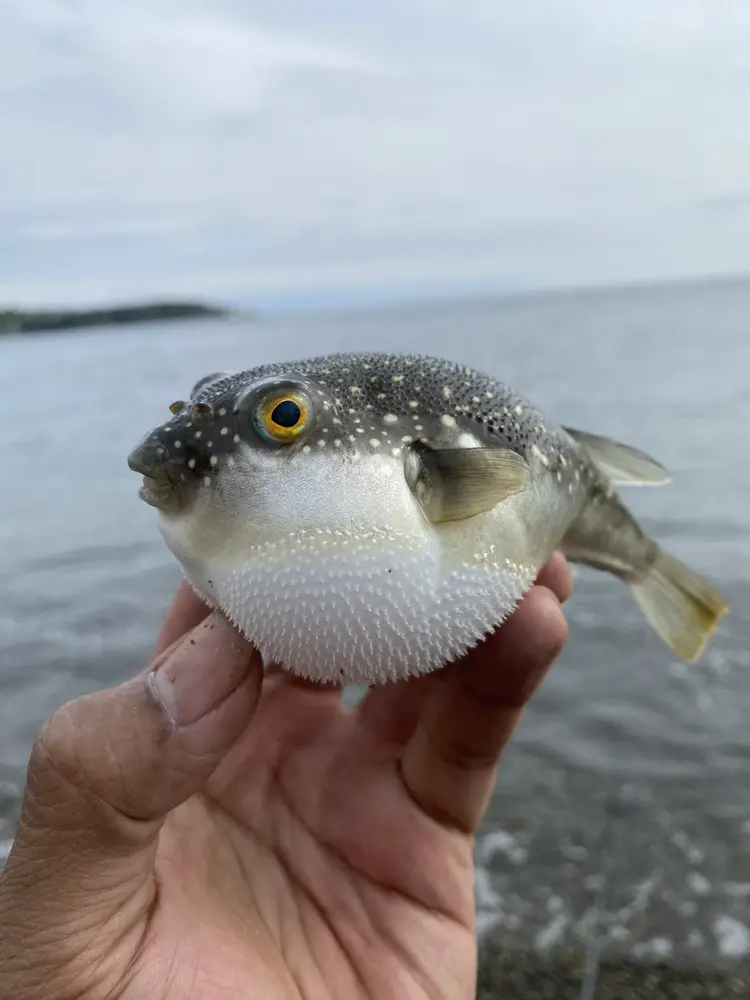
Japan is renowned for its diverse and exquisite cuisine, but none is more infamous than fugu, a dish made from the potentially lethal pufferfish. Preparing fugu requires a highly skilled chef, as certain parts of the fish contain tetrodotoxin, a potent neurotoxin. Chefs undergo rigorous training and must be licensed to serve this delicacy safely, making it a rare culinary art form. As reported by National Geographic, despite the risks, fugu remains a sought-after delicacy in Japan, symbolizing both danger and sophistication.
The flavor of fugu is delicate and subtle, often served as sashimi or in hot pots. For those who dare to taste it, the experience offers a blend of culinary thrill and an appreciation for the chef’s expertise. The texture is often described as unique, with a slight chewiness that distinguishes it from other fish. Fugu season is eagerly anticipated by aficionados, and enjoying it is often considered a testament to one’s adventurous palate.
2. Iceland’s Fermented Shark
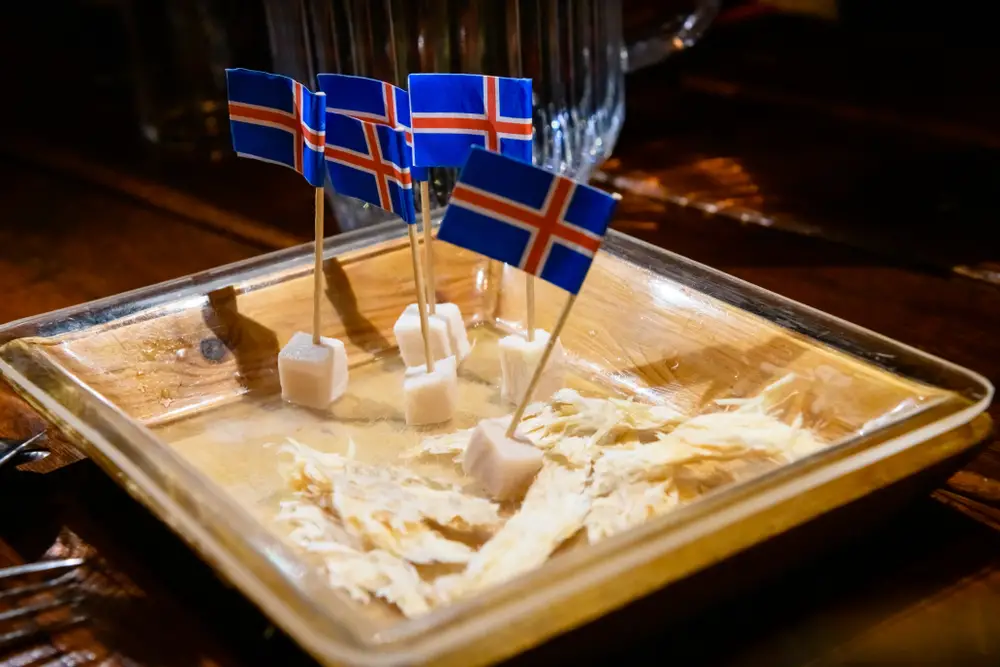
Iceland’s traditional dish, Hákarl, is made from fermented shark and is a staple in the Icelandic diet. The preparation process is rather unique, involving burying the shark meat underground for several months to ferment. This dish is known for its powerful ammonia-rich smell, which can be a bit overwhelming to newcomers. The fermentation process detoxifies the otherwise poisonous shark meat, making it safe to eat. Despite its intimidating aroma, Hákarl is cherished by many Icelanders and is often served during the midwinter festival, Þorrablót, according to Culinary Schools.
For those daring enough to try it, Hákarl can be an acquired taste. It is typically served in small cubes, accompanied by a shot of the local spirit, Brennivín, to help mask the pungency. It is said that the strong flavor can be likened to a robust cheese, and trying Hákarl is often considered a rite of passage for adventurous foodies visiting Iceland. While some might find the taste difficult to appreciate, it offers an authentic taste of Icelandic culture and history.
3. Italy’s Casu Marzu: The Cheese with Maggots

Sardinia, Italy, is home to Casu Marzu, a sheepmilk cheese notorious for its inclusion of live insect larvae. This distinctive delicacy is created by allowing the cheese to ferment with the help of the larvae of the cheese fly, Piophila casei. According to BBC Travel, Casu Marzu is a centuries-old tradition, with the larvae aiding in fermentation and enhancing the cheese’s creamy texture. Despite its controversial nature, Casu Marzu is celebrated as a cultural treasure among locals.
For those willing to venture a taste, Casu Marzu offers a surprisingly rich and mellow flavor, accompanied by a tingle on the tongue from the larvae. While the thought of consuming live insects might be daunting, enthusiasts argue that it is an essential aspect of the cheese’s unique character. This delicacy is often enjoyed with a robust red wine, which complements its bold profile. Although illegal in the European Union due to health regulations, Casu Marzu continues to be produced and savored in Sardinia, maintaining its status as a prized regional specialty.
4. Philippines’ Balut: A Duck Egg with a Twist
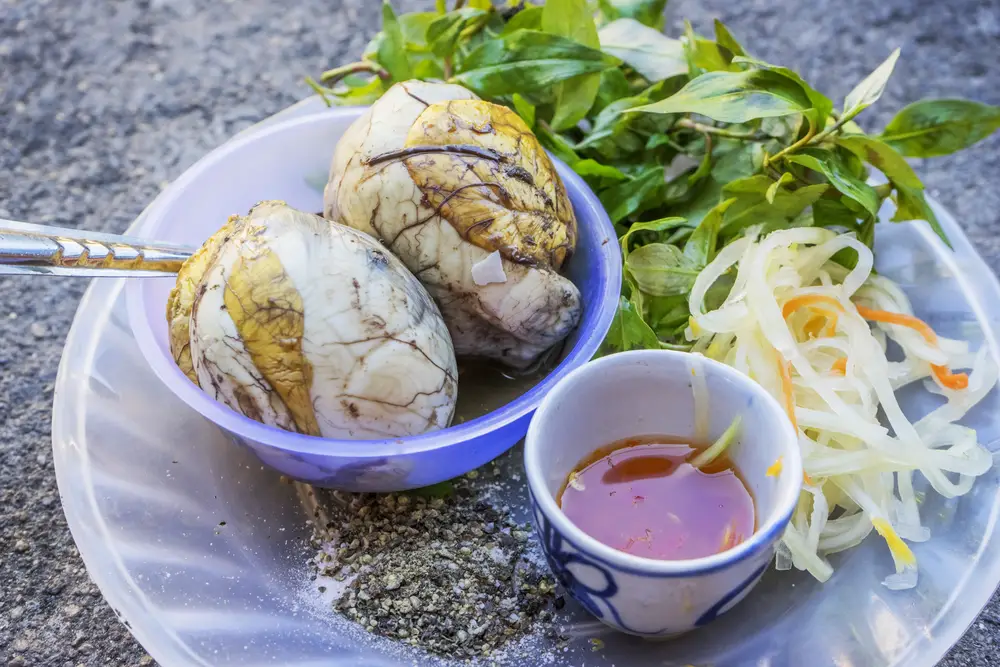
In the Philippines, balut is a street food snack that intrigues and challenges the palates of many. Balut is essentially a fertilized duck egg, incubated for around 14 to 21 days, and then boiled before serving. It has a unique preparation method where the egg is carefully cracked open, and the contents are sipped directly from the shell. This delicacy is often seasoned with a pinch of salt or a drizzle of vinegar to enhance its flavor.
The taste of balut is often described as a savory blend of chicken and egg, with a rich broth-like quality. Its texture, however, can vary significantly, offering a combination of tender yolk and a soft, developing duck embryo. For locals, balut is more than just a snack; it’s a cultural experience and a symbol of culinary heritage. Though it may not appeal to everyone, tasting balut is seen as an adventurous feat and a way to immerse oneself in Filipino tradition.
5. China’s Century Egg: A Timeless Treat
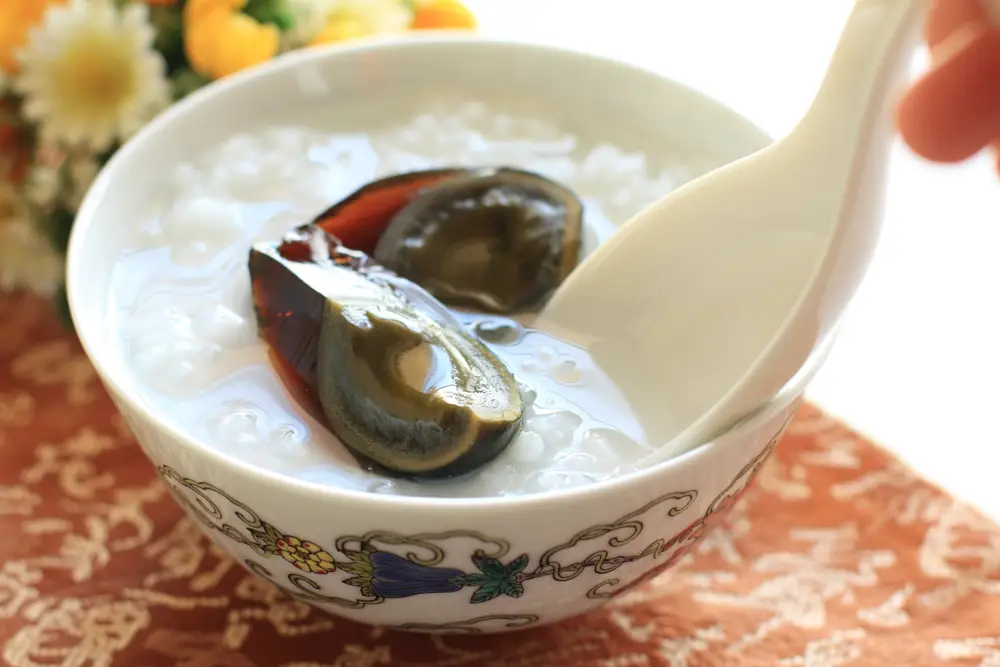
Century eggs, also known as thousand-year-old eggs, are a Chinese delicacy that might look a bit intimidating but are beloved by many. These preserved eggs are made by encasing duck, chicken, or quail eggs in a mixture of clay, ash, and salt for several weeks to months. The preservation process transforms the egg white into a dark, jelly-like consistency, while the yolk takes on a creamy, cheese-like texture.
Despite its unusual appearance, the flavor of a century egg is surprisingly mild, with earthy undertones and a hint of sulfur. Often served as an appetizer or sliced into congee, century eggs are a staple in many Chinese households. For those trying it for the first time, the unique texture and distinct taste can be an intriguing culinary experience. While it might not be everyone’s cup of tea, century eggs are a testament to the rich and diverse food culture of China.
6. South Korea’s Sannakji: The Wriggling Wonder
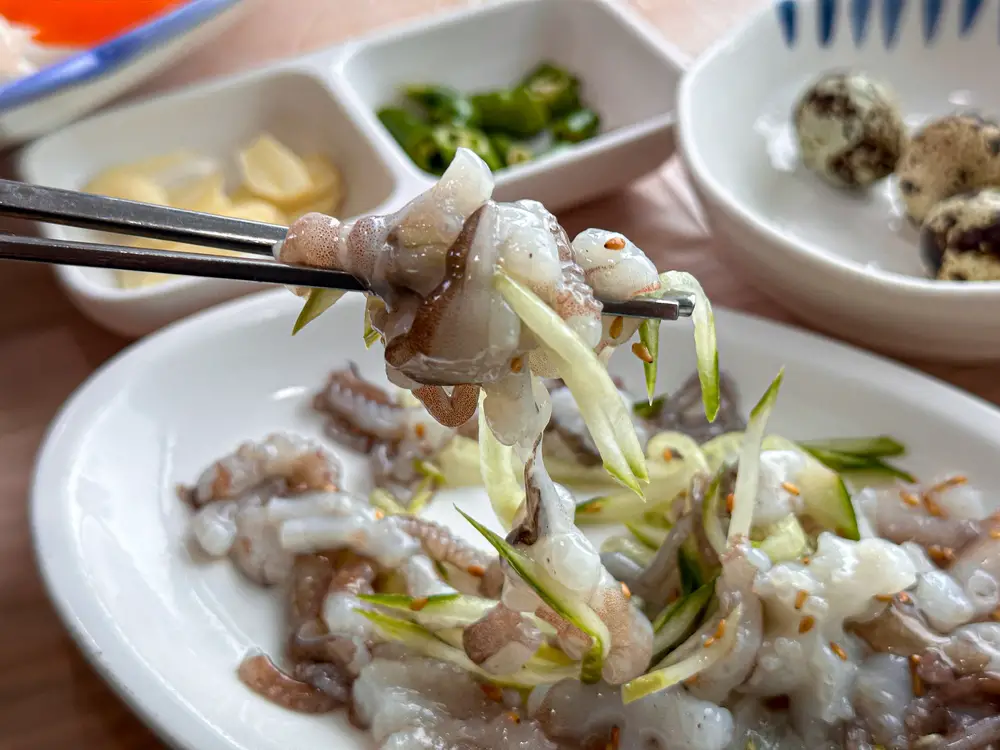
Sannakji is a popular dish in South Korea, featuring live octopus tentacles that are sliced, seasoned, and served immediately. The tentacles continue to move on the plate, providing a unique dining experience that is not for the faint-hearted. This dish is often seasoned with sesame oil and seeds, offering a slight nutty flavor that complements the fresh taste of the octopus. The challenge of eating sannakji lies in its lively nature, as the tentacles are known for their suction abilities.
The texture of sannakji is chewy and tender, providing a refreshing and invigorating burst of flavor. Eating this dish requires careful chewing to ensure the tentacles do not stick to the throat, enhancing the thrill of the experience. Sannakji is often enjoyed with a side of spicy sauce or kimchi, which balances its subtle taste. Despite its unusual presentation, sannakji remains a popular delicacy for both locals and adventurous tourists seeking an authentic Korean dining adventure.
7. Mexico’s Escamoles: Ant Larvae Delicacy
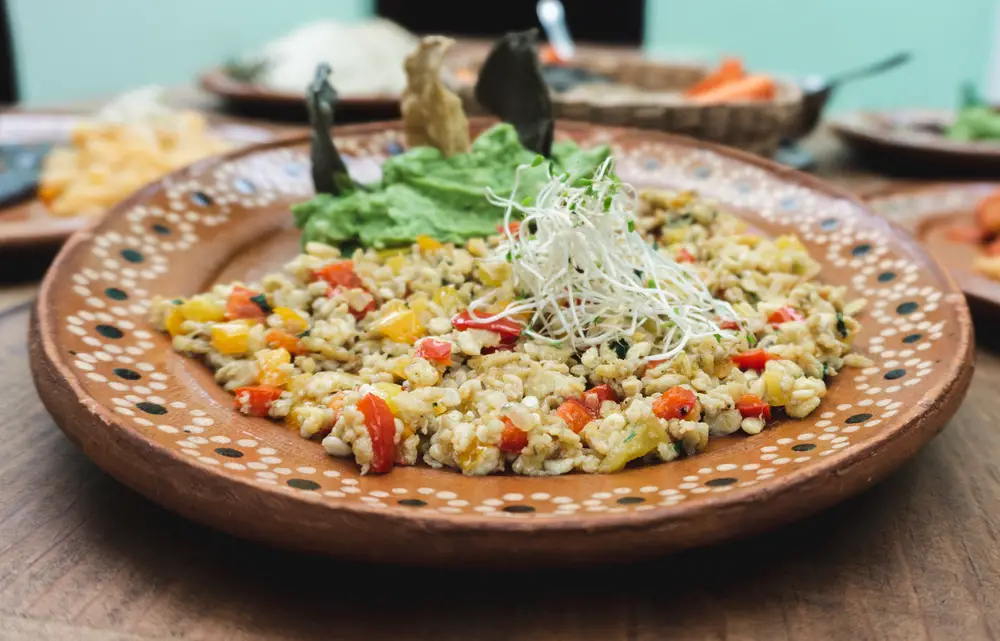
In Mexico, escamoles, or “insect caviar,” are a culinary delight made from the larvae of ants, typically found in the roots of agave plants. These larvae have been consumed since the time of the Aztecs and are considered a seasonal delicacy in Mexican cuisine. The taste of escamoles is often compared to butter or nuts, with a slightly crunchy texture that makes it a versatile ingredient. They are typically sautéed with butter, garlic, and spices or incorporated into tacos and omelets.
The preparation of escamoles is a delicate process, as harvesting the larvae can be challenging and risky due to the ants’ protective nature. For those willing to sample this unique dish, escamoles offer a taste of Mexican heritage and the country’s innovative approach to utilizing local resources. While it might seem unconventional to some, the popularity of escamoles continues to grow, drawing food enthusiasts eager to experience this extraordinary dish. Its subtle, nutty flavor and cultural significance make escamoles a must-try for adventurous eaters.
8. Norway’s Smalahove: A Hearty Sheep’s Head
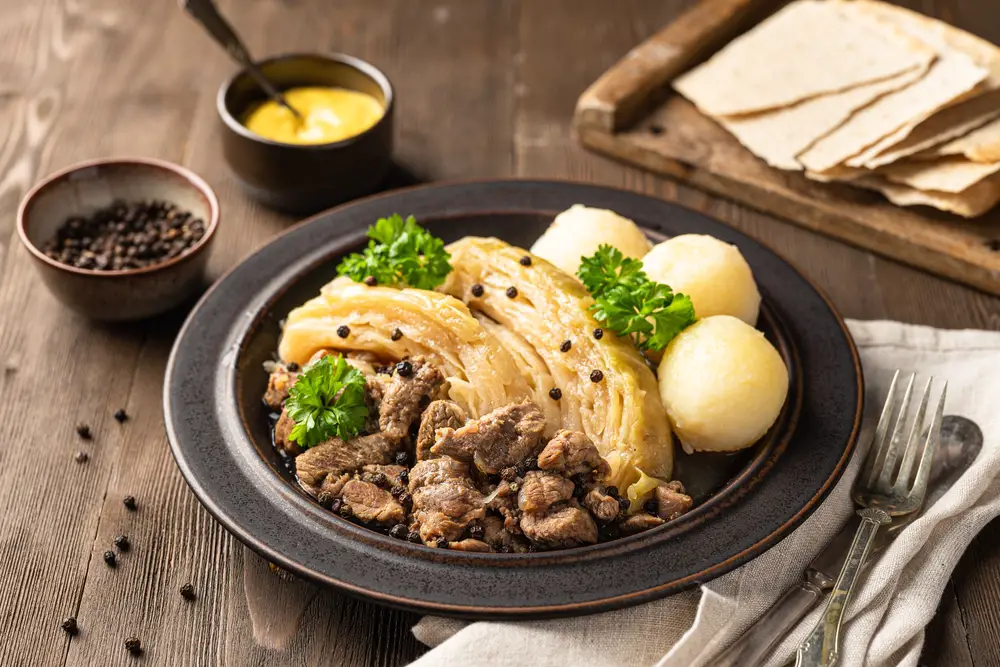
Smalahove is a traditional Norwegian dish that features a sheep’s head, salted, smoked, and cooked until tender. Often served during the Christmas season, this dish is a testament to Norway’s resourcefulness and culinary tradition. The preparation involves splitting the head in half, removing the brain, and carefully cleaning it before cooking. It is typically served with mashed rutabaga and potatoes, providing a hearty and satisfying meal.
The taste of smalahove is rich and savory, with a texture that varies from tender meat to gelatinous skin. For many, eating smalahove is not just about the taste but also a celebration of Norway’s rural heritage and communal dining practices. While it might be a peculiar sight for some, locals cherish smalahove as a festive treat and a link to their agricultural roots. Guests are often encouraged to try the different parts of the head, each offering its distinct flavor and texture.
9. Sweden’s Surströmming: The Fermented Fish Fiasco

Surströmming, a fermented Baltic Sea herring, is a notorious Swedish delicacy known for its potent odor. Traditionally consumed during spring, this dish is made by fermenting herring in barrels for several months, then canning it for continued fermentation. The result is a fish with a strong, tangy flavor that is often described as an acquired taste. Despite its powerful smell, surströmming remains a beloved part of Swedish culinary culture.
For those brave enough to try it, surströmming is typically served with flatbread, potatoes, and onions, creating a balanced and satisfying meal. The fish is usually eaten outdoors due to its pungency, adding to the dish’s unique dining ritual. While it might be challenging for first-timers, surströmming offers an authentic taste of Sweden and is often enjoyed in a social setting. The experience of eating surströmming is as much about the company and tradition as it is about the taste.
10. Thailand’s Larb Mote Daeng: Red Ant Salad
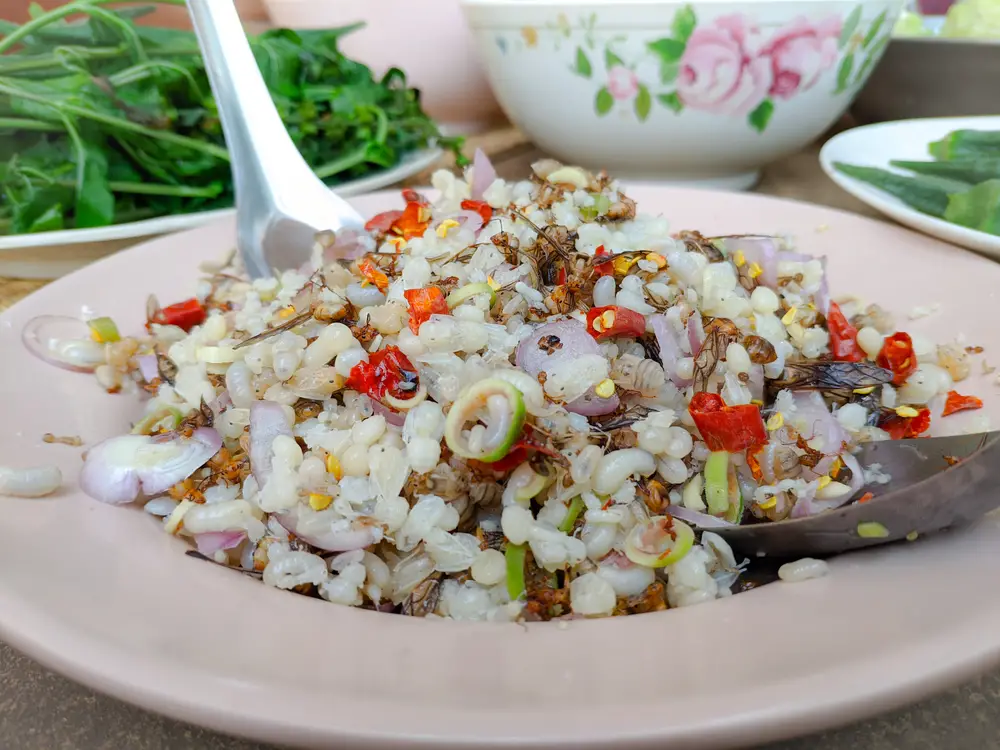
In Thailand, Larb Mote Daeng, or red ant salad, is a popular dish that combines the zesty flavors of red ant eggs with fresh herbs and spices. This unusual delicacy is celebrated for its tangy and citrusy taste, with the ant eggs providing a crunchy texture similar to caviar. Often mixed with lime, chili, mint, and fish sauce, the salad offers a refreshing and vibrant burst of flavors.
The consumption of red ant salad is rooted in the traditional practices of rural communities in Thailand, where insects are a common source of protein. For those curious enough to try, Larb Mote Daeng is a delightful and unexpected dish that highlights the versatility of Thai cuisine. The unique flavor profile and combination of ingredients make it a standout dish for adventurous eaters. While it might be unconventional, red ant salad is a testament to Thailand’s innovative culinary spirit and resourcefulness.
11. Australia’s Witchetty Grubs: The Outback Delicacy
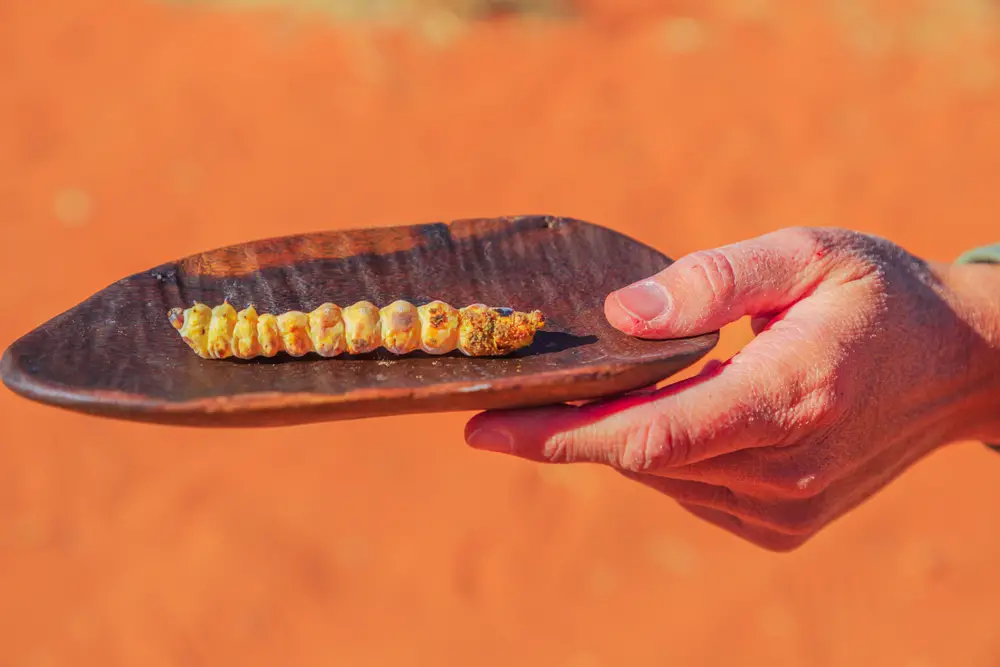
Witchetty grubs are a traditional food source for Indigenous Australians, often found in the roots of witchetty bushes in the outback. These large, white larvae are known for their high protein content and are often consumed raw or lightly cooked over an open flame. The flavor of witchetty grubs is often described as nutty or similar to scrambled eggs, offering a surprisingly pleasant taste for those willing to try.
For Indigenous communities, witchetty grubs are more than just sustenance; they are an integral part of cultural heritage and traditional practices. Eating these grubs can be an enriching experience, providing insight into the survival techniques and diet of Australia’s original inhabitants. While it might be a challenge for some to consider eating insects, witchetty grubs remain a fascinating aspect of Australian cuisine. The opportunity to try them offers a deeper appreciation for the diverse and resilient food culture of the Australian bush.
12. Peru’s Cuy: Guinea Pig Delight
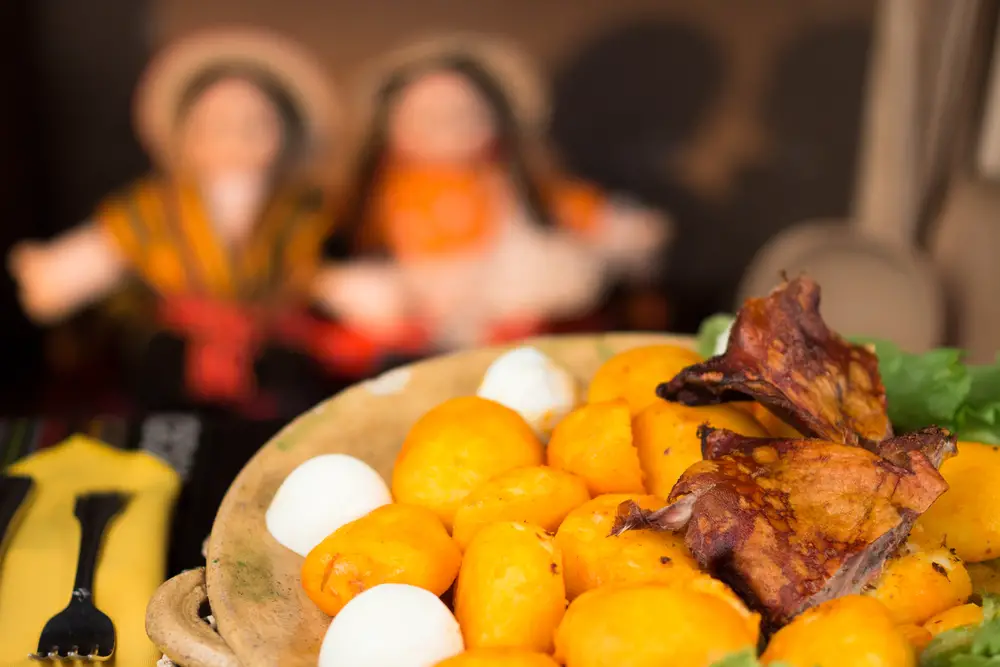
In Peru, cuy, or guinea pig, is a traditional dish with deep cultural significance, often served during special occasions and festivals. This delicacy dates back to pre-Columbian times, where it was a staple protein source for the indigenous people of the Andes. Cuy is usually roasted or grilled, offering a taste reminiscent of rabbit or dark chicken meat, with a crispy skin that adds to its appeal.
The consumption of cuy is a reflection of Peru’s rich culinary history and agricultural practices, showcasing the adaptability and resourcefulness of its people. For those willing to experience it, cuy provides an authentic taste of Peruvian culture and hospitality. The dish is commonly accompanied by potatoes and spicy sauces, enhancing its rich and savory flavor. While it may be unconventional to some, cuy remains a beloved part of Peru’s diverse and vibrant food scene.
